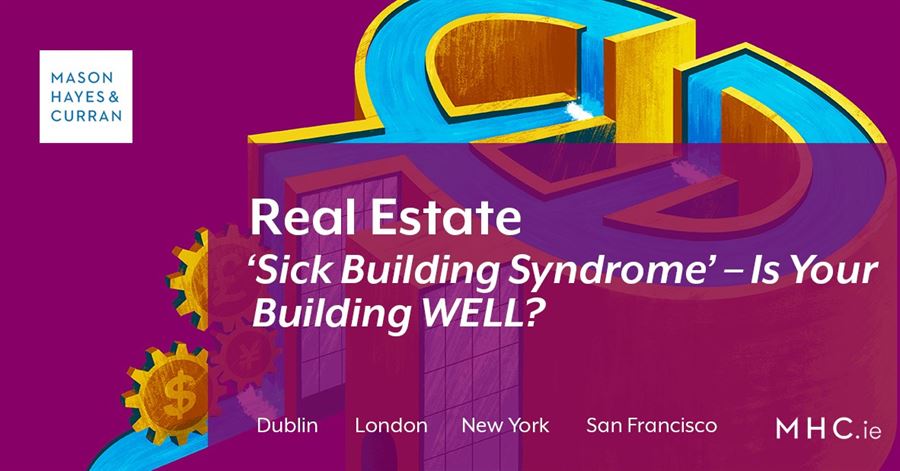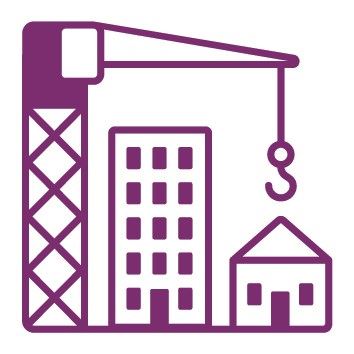
The International WELL Building Institute, founded to address Sick Building Syndrome (SBS), launched its WELL Building Standard (WELL) in October 2014. The overall aim of the building standard is to transform the global indoor environment by placing health and wellness of occupants at the centre of the design and construction decisions within the construction industry. WELL is the first building certification which focuses solely on human wellness and health.
How does WELL work?
WELL measures and monitors building features that affect the building's occupants' health and wellbeing based on years of medical, architectural and scientific research. WELL also assesses the extent to which sustainable design principles have been applied to building and office construction together with environmental footprints, operational costs, and energy use.
The Magnificent Seven
WELL considers each building under seven distinct areas, namely:
 1. Air
1. Air
Air quality can have a considerable impact on one’s health and wellbeing, particularly individuals with allergies or respiratory ailments like asthma. WELL evaluates microbe, mould control, pesticide management, cleaning protocol and moisture management.
2. Water
Requires easy access and high quality drinking water. WELL evaluates if filtered water is available at every water cooler and if each dispenser is within a hundred feet of every occupied desk. It proposes periodic testing of water quality and encourages the use of diverse water treatment procedures.
3. Nourishment
WELL evaluates use of highly processed foods and whether food provided in vending machines or in restaurants is fresh and wholesome. It rewards the promotion of healthy eating habits and raising awareness about unhealthy food. WELL also evaluates access to farmers markets, proximity of other stores offering healthy and fresh food and growth of food inside the building i.e. vertical farming or rooftop gardening.
4. Light
Research suggests that indoor artificial light conditions can affect daily rhythms which directly impacts sleep quality. A major cause of headaches and eyestrain is believed to be lighting levels. WELL evaluates natural and artificial lighting, the prevention of glare as well as colour quality and surface design and provides illumination guidelines. It gives credits for an optimal window-to-wall ratio and visual connection with the outside world.
5. Fitness
WELL considers the proximity of green spaces and the promotion of movement and fitness through design inside the building. This includes integration of furniture that offers mobility and the promotion of incentives which encourage greater levels of physical activity.
6. Comfort
WELL evaluates not only the acoustic, thermal, ergonomic and olfactory comforts within a building, but also the physical and psychological comfort which are crucial to prevent stress and help increase productivity of occupants. These elements can include the ability to easily adjust desks and the management of noise levels throughout the building.
7. Mind
The assessment of how a building affects the mind partly relates to the services provided in the building and partly to the building design. WELL considers the inclusion of nature in the design, conducting of surveys, promotion of health and wellness awareness and adaptability of spaces.
Certification process
Certification includes the submission of project documentation and an onsite audit which can result in the award of a Silver, Gold or Platinum standard.
WELL has 100 features that are categorised as preconditions or base requirements, compliance requirements or optimisations which can take the form of optional enhancements. To achieve the minimum Silver Certification level, the applicant needs to meet different optimisations and all preconditions. Optimisation creates a flexible way towards Platinum and Gold Level Certification.
When to implement WELL?
For building developers who wish to achieve the WELL certification, it will be important to address certain areas of WELL at the building design phase i.e. position of windows or light fittings. Areas such as ‘Water’, ‘Nourishment’, ‘Fitness’, ‘Comfort’ and ‘Mind’, which are mainly related to the management and services provided in the building, can be improved after construction of the building.
Irish examples
ARUP’s Cork office became the first building in Ireland to receive the WELL Certification. The firm indicated that they have seen a 25% increase in performance since making the changes. Iconic Offices is currently pursuing WELL Certification under WELL v2 for its flexible workspace at its Lennox Building in Dublin.
Conclusion
The construction industry may now be moving away from focusing solely on energy performance of buildings and towards a more holistic approach where buildings are built to perform for their occupants.
WELL is designed to set the standard for this change. It aims to revolutionise the future of work and offer benefits for both employers and employees by increasing productivity and decreasing absenteeism. It remains to be seen if the WELL certification will become a standard certification in the office sector.
For more information on achieving WELL Certification for your development project, contact a member of our Real Estate team.
This article was contributed by Thelma Byrne, Associate.
The content of this article is provided for information purposes only and does not constitute legal or other advice.





